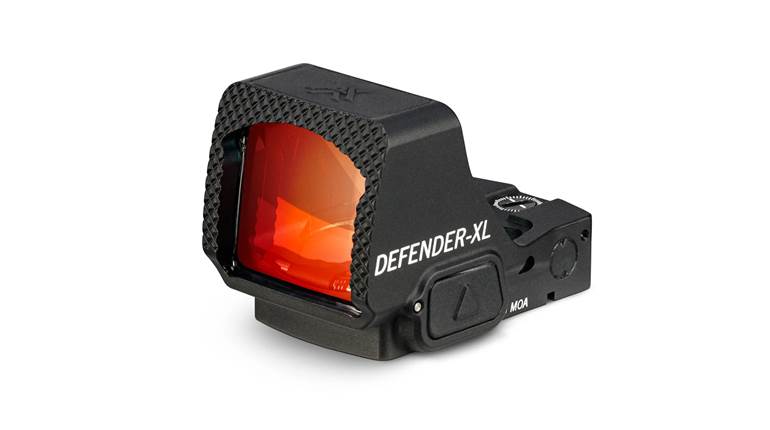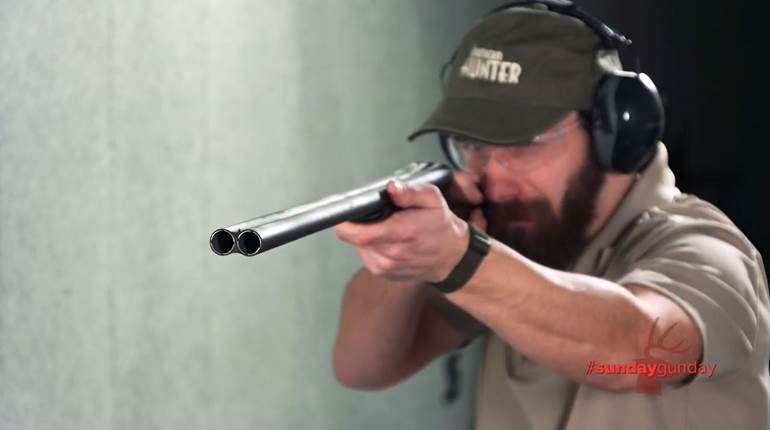
One must ask why Israel decided to invest the time and effort to develop the Tavor series of bullpup rifles, especially considering they were being gifted M16s from the U.S. as part of generous aid packages? The Israelis, who are constantly engaged with foreign and domestic threats, wanted a rifle that was more reliable, durable and easier to maintain than the M16 or M4. It was deemed important to have one weapon that could seamlessly perform in urban environments and open spaces. The IWI Tavor 7 chambered in 7.62 mm NATO is the latest iteration of the Tavor bullpup family.
While bullpup rifle examples exist as far back as the early 1900s, bullpup designs started in earnest after World War II with most sources pointing to the British being at the forefront of development. The experiences of World War II made it obvious that warfare would require the infantry to be armed with a light and compact selective-fire weapon with effective range of fire longer than a submachine gun, but shorter than that of conventional battle rifles. The British quickly saw the advantage of taking the concepts behind the German StG 44 and combining it with a bullpup design.

The British saw an opportunity to get rifle-like ballistic performance out of a smaller package. The choice of a bullpup design was a necessity to retain the accuracy and terminal performance of a longer barrel while reducing overall length. The British emphasis was to find one platform to replace multiple patterns of submachine guns and battle rifles. This foreshadowed the IDF's developmental path to the bullpup.
The IWI Tavor 7 traces its lineage to the Israeli Defense Force (IDF) TAR-21 Tavor. The original Tavor first appeared to the public in 1998, and went through IDF field testing from 1999 to 2002. The Tavor 7’s non-reciprocating charging handle is located at the front-left side of the rifle. Charging handle slots are on both sides, so the handle can be installed on either side of the weapon per user preference.

With the Tavor 7’s charging handle, IWI has added a catch position that allows the bolt to be locked open and then charged with a gentle nudge releasing the bolt forward. The normal bolt release is near the magazine well. The Tavor has no separate receiver with all parts mounted within the impact-resistant polymer housing, reinforced with steel inserts where appropriate. Access to the action is through the use of a hinged buttplate. This simply requires the removal of a retention pin and hinging the buttplate open to allow for the Tavor 7’s action to slide out the rear of the rifle.

Like the AK, the Tavor 7 utilizes a long-stroke gas piston and rotating bolt design. Something new with the Tavor 7 compared to other Tavor siblings is an adjustable gas setting knob located above the barrel. The long-stroke piston operating method combined with weight ratio of the Tavor’s bolt group provides ruthless extraction and chambering; perfect for harsh environments or when weapon care is neglected. The Tavor is a combat rifle, meaning reliability and ruggedness were primary considerations for designers.
The bottom of the Tavor 7’s fore-end has a Picatinny rail hidden beneath removal polymer cover. The Tavor 7 features an ambidextrous magazine release location. It is placed in a traditional location similar to the AR platform above the trigger guard versus back at the magazine well as found on earlier Tavor models.

The Tavor 7’s trigger is much improved compared to the earlier Tavor SAR trigger pack. While still not comparable to the aftermarket Tavor trigger from Timney, the Tavor 7’s trigger is easily managed, measuring about 6 lbs. after taking up slack. The triggers found on bullpups are not as crisp as other designs due to the linkage required between the trigger shoe and trigger pack. One should not try to stage the trigger, but rather work it smoothly like a double-action revolver trigger.
The IWI Tavor 7 tested weighs 9 lbs. and measures at approximately 26.75" long with its 16.5" chrome-lined cold-hammer forged 1:12" twist barrel. The chrome-lined barrel contributes to the low maintenance requirements associated with the Tavor. A full-length Picatinny rail runs down the upper receiver for optic and accessory mounting.

The ambidextrous safety-selector type on the Tavor 7 resembles an AR’s location behind the trigger. The chassis shell of the rifle is made of composite-polymer materials and available in color options of Black, OD Green and Flat Dark Earth. The Tavor 7 comes with a Magpul 20-round magazine.
A Vortex Razor HD Gen III 1-10x24 mm FFP scope was mounted on the Tavor 7. It features a low-power setting for quick target acquisition at close range that is changed with a turn of the knob for longer shots as the mission dictates. The Tavor 7’s Picatinny rail flat-top receivers allow for one of the sturdiest and versatile scope-to-rifle connections methods available.

Variable optics are becoming more standard in military and law enforcement circles, especially as available power ranges expand. The Vortex Razor HD Gen III 1-10x is an excellent example of this. The Razor HD’s 1-10X power range and reticle configuration eliminates the need for using multiple optics as scenarios change.
A CZ USA Ti Reflex suppressor was mounted on the Tavor 7. IWI decided to make the Tavor 7 suppressor friendly, thanks to a new four-position adjustable gas system. This includes "R" for regular use, "A" for adverse conditions, "S" for suppressed and "O" for off. The settings are also numbered from "I" through "IIII." In the “Off” setting, the action will not cycle when the shot is fired. This is intended for very discrete use/application.

Suppressor use has never been as popular for military, law enforcement and civilian use, though the benefits of suppressor use are hard to argue against. The CZ USA Ti Reflex rifle suppressor was direct threaded to the Tavor 7. The Ti Reflex’s 3" reflex chamber was removed due to Tavor 7’s adjustable gas lever interfering with installation. The compact CZ Ti Reflex suppressor performed well with the Tavor 7. The minimal addition to overall length means you can consider leaving the CZ Ti Reflex suppressor attached for multiple scenarios.
The Tavor 7 comes with no back-up iron sights. Previous Tavor models had functional back-up sights that folded down into the Picatinny rail. It's curious why IWI decided to forego this with the Tavor 7. Accuracy with the Tavor 7 was in the 3-MOA range. Certainly not pin-point accuracy, but more than enough for a combat rifle.

A combination of factors makes the Tavor 7 bullpup seem lighter and handier than its 9 lbs. would suggest. Its shorter overall length, center of gravity toward rear of rifle and hand positioning contribute to this. Several magazines worth of ammunition was spent engaging plate racks and man-sized steel targets.
Drills quickly moved past stand-and-deliver drills to more dynamic drills involving movement, magazine reloads and firing from behind cover. The Tavor 7’s recoil impulse is decidedly different in a positive way. Smoother and more subtle are two descriptions that come to mind. The straight-line bore axis and relatively wide buttstock found on the Tavor 7 contribute to the dampened recoil, which is better than an AR-10 platform.

The Tavor’s close association to the IDF’s issued service rifle inspires confidence of not only having a unique platform, but also one that works as advertised. Many will find the Tavor 7 desirable due to its compactness, reliability and hard-hitting terminal punch. This is a combination that's hard to argue against. The tide seems to be changing in terms of bullpup acceptability and availability. For more information on the IWI Tavor 7, visit iwi.us.
SPECIFICATIONS: IWI Tavor 7
CALIBER: 7.62NATO
BARREL: 16.5" chrome-line hammer-forged CrMoV 1:12" right-hand twist.
LENGTH: 26.75"
WEIGHT: 9" empty
SIGHTS: None, Picatinny rail for mounting of aftermarket sights.
ACTION: Semi-automatic
CAPACITY: 10, 20, or 25 round detachable magazine compatible.
MSRP: $2,099




































